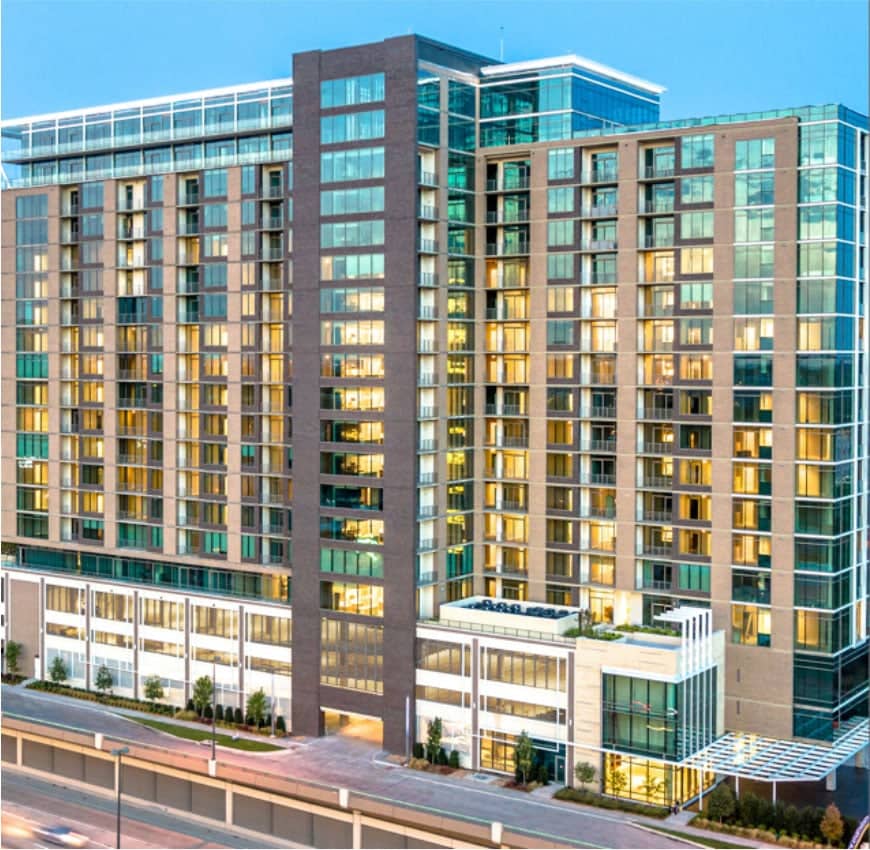On March 11, 2020, the WHO declared COVID-19 a global pandemic. Suddenly, multifamily operators faced a dramatic new reality:
- New health and safety protocols for all employees and residents
- Limited on-site and remote teams
- High turnover from tenants seeking more affordable or alternate housing options
- Rent income loss from tenants who faced pandemic-related hardships
- Record high occupancies amidst stay-at-home orders
- Government-mandated emergency bans on evictions
Reading the list above, one would not guess the multifamily space would have performed as well as it did in 2020. Despite warnings about millions of renters unable to pay their rent from the economic fallout, overall rent collection was down a mere 1-2% from 2019. National rents showed a modest 0.8% drop in December year-over-year and national unit absorption was only 9% below 2019 levels.
So, how did this happen?
Stimulus legislation and other government relief (i.e. the Paycheck Protection Program) helped bolster residents’ ability to continue paying rent and ensure some property cashflow. Additionally, qualifying multifamily properties received mortgage forbearance protection.
There was also a notable shift in renter behavior. With as much as 70% of the U.S. workforce working from home, there was an initial spike in tenant retention. Location was also a key consideration as residents fled higher-priced primary cities for more affordable options in the suburbs. As a result, multifamily properties in tertiary and secondary markets concluded 2020 2.3% positive net leased of total stock with rents increasing 3.1% and 0.4%, respectively. Absorption slipped in primary locations at a rate of 0.2% in 2020 and saw rents decline 6.1%.
Where are we now and what’s next?
The apartment sector kicked off the new year on solid footing and should continue to see impressive gains in 2021 in terms of rent growth (already up 1.6% year-to-date) and occupancies. Increased job security and renewed economic confidence is also allowing more people to abandon shared living accommodations for independent rental living.
Less expensive properties in more affordable markets should continue to outperform their counterparts this year. However, as the vaccine rate increases, more people head back to the office and urban amenities return, so will the gradual demand for urban hubs. Class A assets in these areas may have to offer generous concessions in an effort to remain competitive and boost occupancy, at least for the foreseeable future.
At the property management level, multifamily owner/operators were forced to embrace new innovations or risk becoming obsolete when the COVID-19 crisis struck. New “COVID-compliant” technologies and processes were incorporated into daily operations, including touchless entry points, enhanced amenity management systems, virtual touring, automated lease acquisition and more robust tenant portals—just to name a few. While initially a response to the pandemic, these enhancements will continue to pay off going forward. The apartment sector was already pretty progressive pre-2020…COVID-19 just accelerated the rate of new tech-adoption. Smart capacities that were previously considered perks or were limited to certain asset types may become standard requirements post-pandemic.
Then there is the housing market.
Record-low mortgage interest rates and more remote jobs than ever before have created a fanatical housing market, selling more existing homes in 2020 since the peak of 2006. The supply-and-demand game is fierce. More buyers are entering the playing field and gobbling up any and all available inventory. Home prices are skyrocketing, increasing 15.2% in May 2021 compared to last year. But although the housing market is poker-hot, the multifamily space is also reaping the benefits:
- Single-family rentals are going up for sale, forcing renters to seek new housing accommodations like apartments
- Housing prices are increasing so much and so fast that many potential buyers are now being outbid or outpriced, and may have to resort to apartments
Investment activity will also rise.
Expect CRE investors planning to expand or diversify their portfolios to take a good look at multifamily. With strong property values and favorable interest rates that could continue at least through this year, more players are expected to start making deals. Overall investment activity is expected to pick up as much as 33% from 2020.
The multifamily market is a bright spot in CRE and industry experts predict a full recovery in early 2022. The sector proved to be much more resilient during a time when the worst was expected. But with some new strategic innovations, careful decision-making and perhaps a little luck, the multifamily space ranks second in CRE.
To learn more about commercial real estate trends, visit us at kbs.com/insights.




